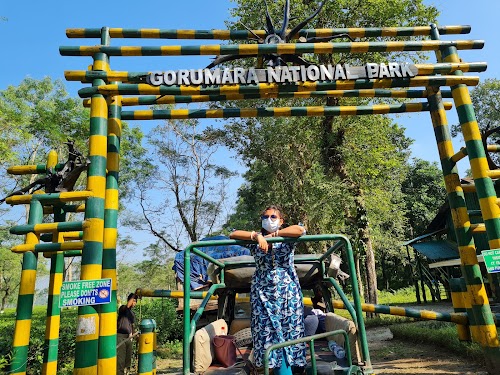
Gorumara National Park
Jalpaiguri, India
- Bird watching with experienced guides
- Elephant safari for closer wildlife encounters
- Explore the local villages around Gorumara
- Jeep safari through the national park
- Nature walks along designated trails
- Visit watchtowers for panoramic views
Known for:
Description:
Gorumara National Park, nestled in the Dooars region of Jalpaiguri, West Bengal, is a haven for wildlife enthusiasts and nature lovers. The park is renowned for its rich biodiversity, boasting a variety of flora and fauna. The main attraction is the Indian rhinoceros, but the park also shelters elephants, gaurs, sloth bears, various deer species, and a plethora of birds, including the Indian pied hornbill and woodpeckers. The landscape is a mix of grasslands, moist deciduous forests, and riverine habitats, making it a picturesque destination. Jeep safaris and elephant rides are popular ways to explore the park, offering opportunities for wildlife sightings. Watchtowers strategically located throughout the park provide panoramic views and increase the chances of spotting animals in their natural habitat. Gorumara is a must-visit for those seeking an immersive wildlife experience in a serene setting.
History:
Gorumara was declared a wildlife sanctuary in 1949, initially covering a smaller area. Recognizing its ecological significance and the need for greater protection, it was upgraded to a National Park in 1994. The area has a long history of human-animal interaction, with local communities traditionally relying on the forest for resources. Conservation efforts have focused on balancing the needs of the local population with the preservation of the park's biodiversity. The park's management has worked to reduce human-wildlife conflict and promote sustainable tourism. Over the years, Gorumara has become a vital refuge for endangered species like the Indian rhinoceros, contributing significantly to their conservation in the region. Today, it stands as a successful example of wildlife conservation and ecotourism in Eastern India.